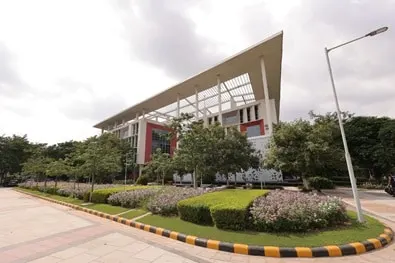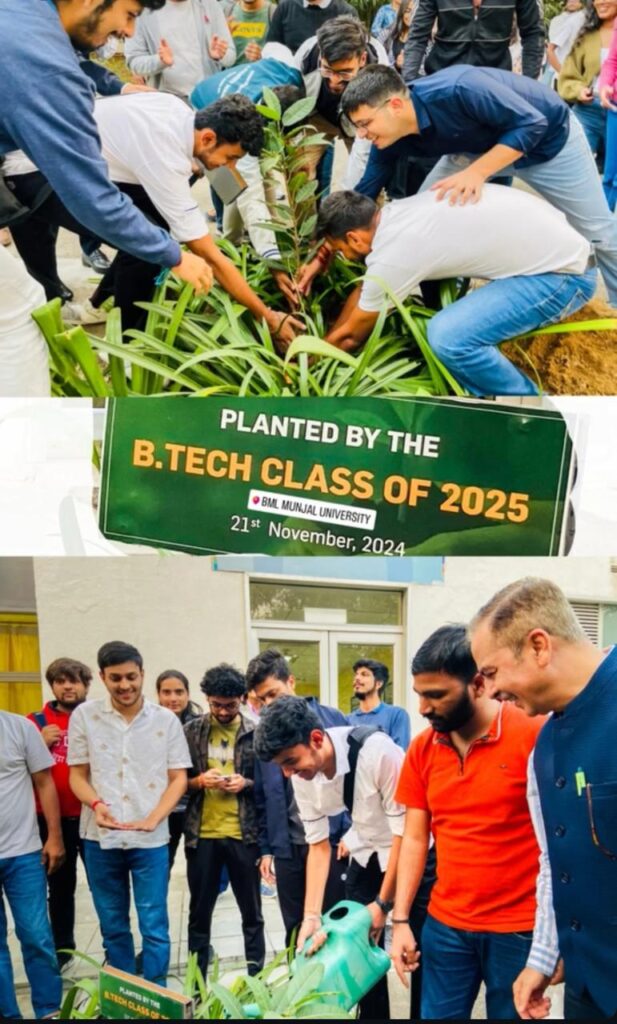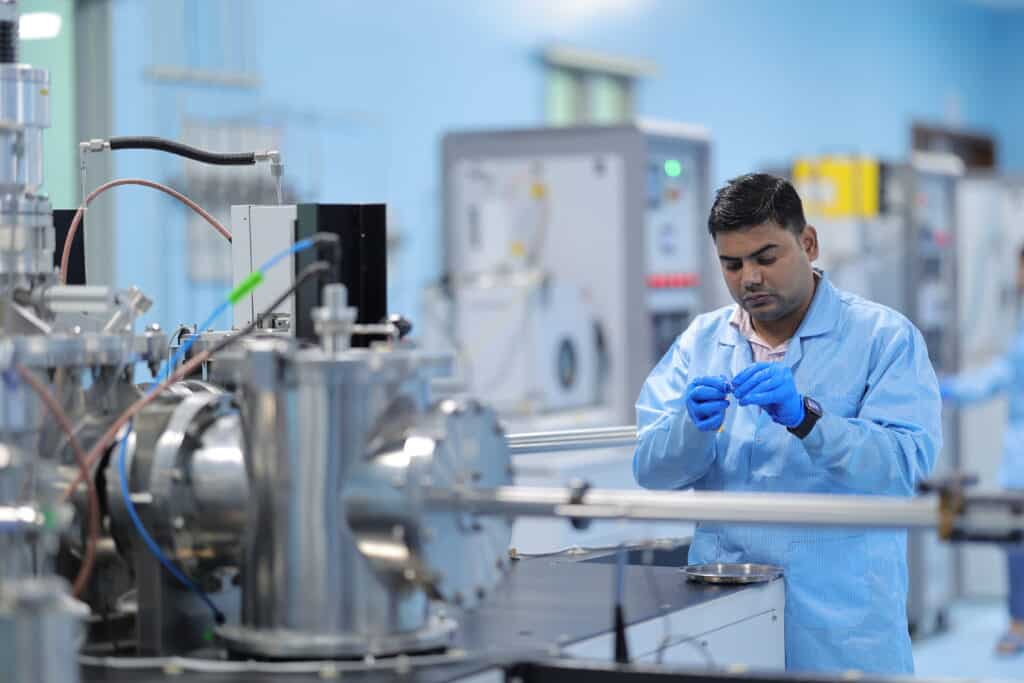CLEAN WATER AND SANITATION


BML Munjal University (BMU) demonstrates a robust commitment to environmental sustainability, particularly in alignment with Sustainable Development Goal 6 (SDG-6), which focuses on ensuring the availability and sustainable management of water and sanitation for all. This report highlights the university’s significant achievements in sustainability and identifies areas for further improvement based on a thorough assessment.
BMU has made impressive strides in aligning its operations with SDG-6 through a comprehensive approach to water management, environmental education, and community outreach. The university’s staff display a high level of environmental awareness and proactive engagement, fostering a span institutional culture of sustainability. BMU maintains an up-to-date database of its environmental and green initiatives, ensuring effective decision-making and resource management.
Water use management at BMU is both transparent and conscientious, with detailed records of water usage for human consumption and landscaping. This meticulous monitoring is essential for achieving SDG-6 objectives. Similarly, the university’s energy usage data reflects its sustainable approach to energy management, which indirectly supports water conservation through improved energy efficiency.
The installation of a Sewage Treatment Plant (STP) on campus underscores BMU’s commitment to water sanitation and reuse. Detailed records of treated water quality and quantity are maintained, and the treated water is effectively reused for gardening and flushing, thereby reducing freshwater consumption and promoting resource efficiency. Additionally, labelling most trees on campus with their general and botanical names enhances environmental education among students and staff.
BMU’s sustainability efforts also encompass social dimensions, including the active inclusion of women in climate-related initiatives, highlighting the university’s dedication to gender equality within its sustainability agenda. The university’s comprehensive environmental policy, which addresses air quality and other critical aspects, serves as a foundational document for its sustainable practices.
BMU’s proactive approach to climate mitigation is evident in its plantation policy and action plan aimed at increasing green cover on campus. The university also employs innovative practices, such as maintaining e-library usage records and planning for digital resources, to reduce paper consumption and support environmental sustainability.
Community engagement is another strength of BMU’s sustainability initiatives. The university’s staff and students actively participate in environmental improvement activities, fostering a community-driven approach to sustainability. BMU’s food waste management practices, including awareness campaigns, composting, and the use of compost in landscaping, exemplify circular economy principles in action.
Sustainable consumption on campus is encouraged through the presence of on-site grocery and stationery shops, which reduce travel needs and conserve time and fuel. Furthermore, BMU conducts regular awareness programs, tree plantation drives, and outreach activities in neighbouring villages, extending the message of environmental sustainability beyond campus boundaries.
The university’s National Cadet Corps (NCC) and National Service Scheme (NSS) initiatives, which include tree planting, awareness campaigns, and community service activities, reflect BMU’s commitment to instilling environmental responsibility in its students. Additionally, the university’s tobacco-free policy and use of sustainable infrastructure, such as water-based paints and adherence to environmental regulations, further demonstrate BMU’s dedication to maintaining a healthy and sustainable campus environment.
Research Insights:
At BMU, our research aligns with Sustainable Development Goal 6 (SDG 6), which aims to ensure availability and sustainable management of water and sanitation for all. Our work focuses on addressing emerging water pollutants—such as dyes and antibiotics—by developing innovative, sunlight-driven semiconductor-based photocatalysts. These photocatalysts harness solar energy to convert harmful organic pollutants into non-toxic byproducts like carbon dioxide (CO₂) and water, thus contributing to cleaner water and better sanitation.
Our research is conducted at the Centre for Advanced Materials and Devices (CAMD) at BMU, where we synthesize and characterize a range of non-toxic, non-noble metal-based semiconductor photocatalysts. This work is crucial for enhancing water quality and developing sustainable solutions for water treatment. Notable publications reflecting our progress in this area include:
- Barman, S.; Singh, B.; Bag, A. “Visible light driven photocatalytic degradation of Methyl Orange by Fe2O3-BiOCl0.5Br0.5 heterojunction photocatalyst” Asia Pacific Journal of Chemical Engineering, 2021, DOI: 10.1002/apj.2715.
This study explores the effectiveness of a Fe2O3-BiOCl0.5Br0.5 heterojunction photocatalyst in degrading Methyl Orange under visible light, demonstrating its potential for treating contaminated water.
- Ashraf, W.; Bansal, S.; Singh, V.; Barman, S.; Khanuja, M.* “BiOCl/WS2 hybrid nanosheet (2D/2D) heterojunctions for visible-light-driven photocatalytic degradation of organic/inorganic water pollutants” RSC Advances, 2020, 10, 25073-25088. https://doi.org/10.1039/d0ra02916e.
This publication details the development of a BiOCl/WS2 hybrid nanosheet heterojunction for the efficient degradation of both organic and inorganic pollutants in water, emphasizing its relevance for improving water quality.
In addition to photocatalysis, we are also committed to sustainable waste management. Our research includes converting agricultural waste, such as wheat straw, into valuable materials like nanocellulose. Nanocellulose, known for its high surface area and non-toxic properties, is employed for the adsorption of organic pollutants from wastewater, offering a sustainable approach to water purification. A key publication in this area is:
- Barman, S.*; Bera, S. “A zero-waste one-step method to produce carboxy nanocellulose from untreated barley and wheat straws” Journal of Wood Chemistry and Technology. https://doi.org/10.1080/02773813.2024.2303038.
This paper introduces an eco-friendly method for producing carboxy nanocellulose from barley and wheat straws, demonstrating its effectiveness in wastewater treatment and supporting sustainable water management practices.



